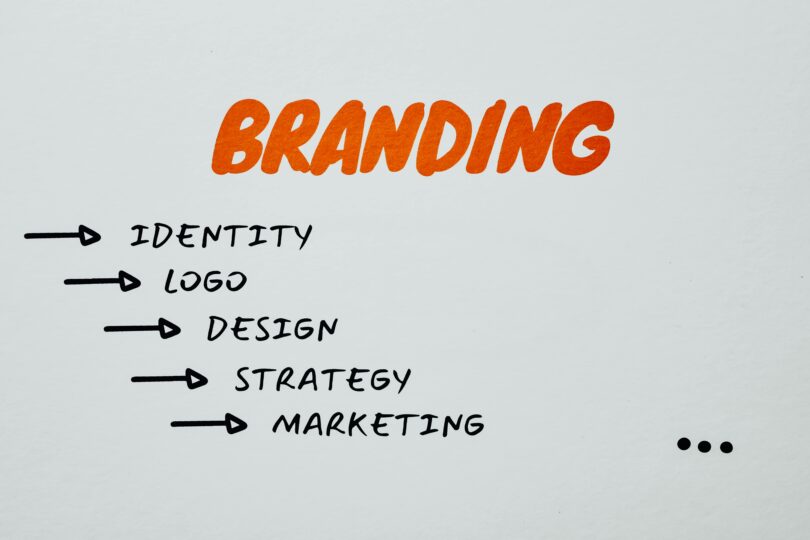Building a Strong Brand Identity: Tips for Entrepreneurs
Creating a strong brand identity is crucial for entrepreneurs looking to differentiate their business in a competitive marketplace. Your brand identity goes beyond just a logo or catchy tagline; it encompasses the values, personality, and overall impression your business leaves on customers. A well-defined brand identity can foster customer loyalty, increase recognition, and ultimately drive business growth. In this article, we will explore actionable tips for entrepreneurs to build a strong, impactful brand identity.
What is Brand Identity?
Before diving into the tips for building a strong brand identity, it’s important to understand what brand identity is and why it’s so essential. Brand identity is the visible elements of a brand (such as colors, design, and logo) that communicate the essence of the business to consumers. It includes how your business is perceived, its mission, values, and the overall customer experience you deliver. It’s a combination of tangible and intangible elements that make your brand memorable and distinguishable from competitors.
Why is Brand Identity Important?
-
Recognition
A strong brand identity helps your business stand out in a crowded marketplace. Consistent branding makes it easier for customers to recognize your company, products, and services, which can lead to higher trust and sales. -
Customer Loyalty
A clear and compelling brand identity builds emotional connections with customers. People are more likely to stay loyal to a brand that resonates with their values and interests. -
Differentiation
Having a distinct brand identity helps you differentiate your products and services from those of competitors. A unique brand identity makes you memorable and helps communicate your value proposition clearly. -
Perceived Value
Effective branding elevates your business’s perceived value. A professional and cohesive brand identity can make a small startup appear more established and trustworthy, even if it’s still growing.
1. Define Your Brand’s Core Values and Mission
One of the first steps in building a strong brand identity is to define the core values and mission of your business. These values will guide all other branding decisions and influence how customers perceive your company.
-
Core Values: What principles drive your business? These might include innovation, sustainability, customer service, or social responsibility. Your values should be authentic and aligned with what you stand for.
-
Mission Statement: Your mission statement articulates your purpose and the impact you want your business to have on the world. It’s a concise summary of your brand’s reason for existing.
Actionable Tip: Write a mission statement that clearly defines the purpose of your business. This will serve as the foundation for your brand identity, ensuring everything you do aligns with your overarching goals.
2. Understand Your Target Audience
A crucial part of building a brand identity is knowing your target audience. Understanding their needs, desires, and pain points allows you to craft messaging and visuals that resonate with them.
-
Demographics: Consider factors such as age, gender, income level, and education. These attributes can help you identify how to communicate with your audience more effectively.
-
Psychographics: Beyond demographics, consider your audience’s lifestyles, interests, and values. What drives their decision-making? What do they care about most?
Actionable Tip: Conduct surveys, interviews, or market research to gather insights about your target audience. The more you understand your audience, the more you can tailor your brand identity to meet their expectations.
3. Create a Memorable Logo
A logo is one of the most visible aspects of your brand identity. It’s often the first thing people associate with your business. A good logo is simple, memorable, and reflective of your brand’s values and mission.
-
Simplicity: A clean and uncomplicated logo is more likely to be remembered.
-
Relevance: Your logo should align with your business’s core values and the emotions you want to evoke in your audience.
-
Timelessness: Avoid trends that may quickly become outdated. A good logo should stand the test of time.
Actionable Tip: Work with a professional designer to create a logo that captures the essence of your brand. Ensure it’s scalable and looks good across all platforms, from business cards to social media profiles.
4. Develop a Consistent Brand Voice
Your brand voice represents how your business communicates with its audience. Whether you choose a friendly, professional, or witty tone, consistency is key. Your brand voice should reflect your business’s personality and align with your audience’s expectations.
-
Consistency Across Platforms: Whether it’s your website, social media, or email newsletters, your messaging should remain consistent. Inconsistent messaging can confuse potential customers and undermine your brand’s credibility.
-
Be Authentic: Ensure that the brand voice you adopt aligns with your actual business culture. Authenticity is key to building trust with your audience.
Actionable Tip: Create a brand voice guide that includes examples of how to communicate in different scenarios (e.g., customer service, advertising, social media). This will help maintain a consistent tone across all touchpoints.
5. Choose the Right Color Palette and Typography
Colors and typography play a significant role in shaping how people perceive your brand. Certain colors evoke specific emotions, and the right typography can convey professionalism or creativity, depending on your brand’s character.
-
Colors: Different colors can evoke different emotional responses. For example, blue is often associated with trust and reliability, while red conveys energy and passion.
-
Typography: The style of your fonts should reflect your brand’s personality. A tech startup might opt for sleek, modern fonts, while a handmade craft business might choose more organic, handwritten styles.
Actionable Tip: Choose a color palette and typography that align with your brand’s personality and values. Stick to 2-3 primary colours to maintain simplicity and consistency.
Read More: How AI and Automation Are Reshaping the Future of Small Businesses?
6. Create a Unique Brand Experience
Brand experience refers to how customers interact with your business, both online and offline. A strong brand identity is not just about visuals or messaging—it’s also about the overall experience you deliver to your customers.
-
Customer Service: Offering exceptional customer service is a key aspect of building a strong brand. A positive experience with your team can create a lasting impression and build customer loyalty.
-
Product Quality: Ensure that your products or services reflect the quality your brand promises. A positive experience with your product can reinforce your brand identity and strengthen customer relationships.
Actionable Tip: Map out every touchpoint in your customer’s journey, from discovery to post-purchase, and ensure each step aligns with your brand values. Consistency in your brand experience will help build a cohesive identity.
7. Leverage Social Media to Build Your Brand
In today’s digital age, social media plays a vital role in building and maintaining a strong brand identity. Social media allows you to connect with customers directly, share your brand story, and promote your products or services in a more personal way.
-
Engage With Your Audience: Don’t just post promotional content. Engage with your followers by responding to comments, sharing behind-the-scenes content, and participating in conversations that are relevant to your brand.
-
Consistency: Just like your website and marketing materials, your social media profiles should maintain consistent branding. Use the same colors, fonts, and logo across all platforms.
Actionable Tip: Develop a social media strategy that includes regular posts, engagement tactics, and content that showcases your brand’s values. Use visuals that align with your brand identity to create a consistent presence.
8. Be Transparent and Authentic
In today’s world, consumers value authenticity and transparency more than ever. Being genuine in your brand messaging can help you build trust with your audience.
-
Honesty: Don’t try to oversell or mislead your audience. Be transparent about your products, services, and any challenges your business might face.
-
Social Responsibility: If your brand has values related to sustainability, diversity, or other causes, make them known. People want to support businesses that align with their values.
Actionable Tip: Share the story of your brand’s origins, challenges, and successes to connect with your audience on a deeper level. Show how your business is making a positive impact in the world.
9. Stay Consistent Over Time
Building a strong brand identity takes time, and consistency is key. Don’t change your logo, color scheme, or messaging too frequently, as this can confuse your audience and undermine your brand’s recognition.
-
Brand Guidelines: Create a comprehensive set of brand guidelines that outline how your brand should be represented across all platforms. These should include logo usage, color palette, typography, and brand voice.
-
Monitor Your Brand’s Perception: Regularly check how your brand is being perceived by customers and make adjustments as needed. It’s important to stay relevant without straying too far from your core values.
Actionable Tip: Regularly review your brand identity and ensure it aligns with your goals, market trends, and customer preferences. However, resist the urge to change things too often.
10. Evolve Your Brand Over Time
While consistency is essential, it’s also important to evolve your brand as your business grows with brand identity. As your audience expands and your offerings evolve, your brand identity should reflect these changes.
-
Stay Current: Keep an eye on market trends and consumer preferences to ensure your brand remains relevant.
-
Update Your Messaging: As your business evolves, your messaging may need to evolve too. Make sure your brand story continues to resonate with your target audience.
Actionable Tip: Periodically assess your brand’s performance and how it’s being received by your audience. If necessary, make incremental changes that align with your brand’s long-term vision.




